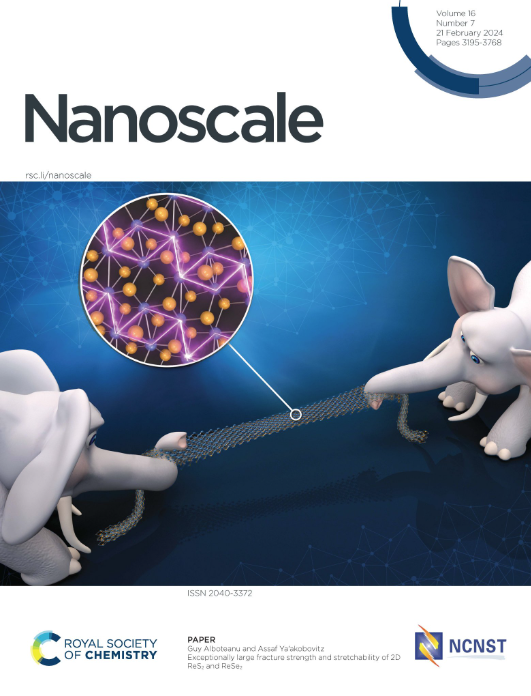CT imaging of and therapy for inflammatory bowel disease via low molecular weight dextran coated ceria nanoparticles
IF 5.8
3区 材料科学
Q1 CHEMISTRY, MULTIDISCIPLINARY
引用次数: 0
Abstract
Inflammatory bowel disease (IBD) affects approximately 3.1 million individuals in the U.S., causing deleterious symptoms such as bloody diarrhea and leading to an increased risk of colorectal cancer. Effective imaging is crucial for diagnosing and managing IBD, as it allows for accurate assessment of disease extent and severity and guides treatment decisions, and monitors therapeutic responses. Computed tomography (CT) with contrast agents is the gold standard for imaging the gastrointestinal tract (GIT). However, current agents are less effective in obese patients and lack specificity for inflamed regions in IBD. Moreover, IBD treatments often have limited efficacy and do not address the role of oxidative stress in IBD progression. This study explores dextran-coated cerium oxide nanoparticles (Dex-CeNP) as a CT contrast agent and therapeutic for IBD, leveraging cerium’s superior K-edge energy profile, inflammation-targeting dextran coating, and cerium oxide’s antioxidant properties. We herein sought to explore the effect of the molecular weight of the dextran coating and therefore synthesized Dex-CeNP formulations using 5, 10, 25, and 40 kDa dextran. In vitro assays showed these formulations to be safe and demonstrated that 5 kDa Dex-CeNP had the highest catalytic activity, which translated into improved suppression of inflammation. This formulation was therefore selected for in vivo use. In vivo CT imaging of mice subjected to dextran sodium sulfate (DSS) colitis showed that Dex-CeNP provided better contrast in the GIT of mice with colitis compared to iopamidol (ISO), with pronounced attenuation in the large intestine and disease- specific retention at 24 hr. Dex-CeNP significantly decreased Disease Activity Index (DAI) scores compared with a currently used drug, indicating that it is effective treatment for colitis. Additionally, Dex-CeNP-treated mice had reduced colon contraction and diminished gastrointestinal bleeding, while being safe and well-excreted. In summary, Dex-CeNP has significant promise as a dual-purpose agent for CT imaging and treatment of IBD.求助全文
约1分钟内获得全文
求助全文
来源期刊

Nanoscale
CHEMISTRY, MULTIDISCIPLINARY-NANOSCIENCE & NANOTECHNOLOGY
CiteScore
12.10
自引率
3.00%
发文量
1628
审稿时长
1.6 months
期刊介绍:
Nanoscale is a high-impact international journal, publishing high-quality research across nanoscience and nanotechnology. Nanoscale publishes a full mix of research articles on experimental and theoretical work, including reviews, communications, and full papers.Highly interdisciplinary, this journal appeals to scientists, researchers and professionals interested in nanoscience and nanotechnology, quantum materials and quantum technology, including the areas of physics, chemistry, biology, medicine, materials, energy/environment, information technology, detection science, healthcare and drug discovery, and electronics.
 求助内容:
求助内容: 应助结果提醒方式:
应助结果提醒方式:


